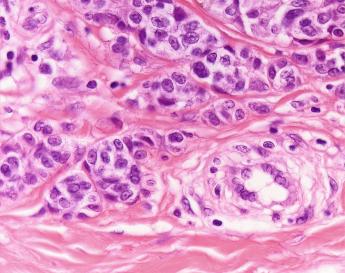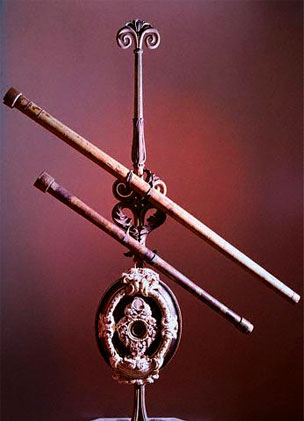Related Topics
Right Angle Club 2017
Dick Palmer and Bill Dorsey died this year. We will miss them.
Wister-Wistar
Wistar-Wister
The Wistars Think Big, But Talk Softly

|
| The Wistar Institute |
The Wistar Institute sits on the Penn campus, surrounded by Penn buildings. But it is entirely independent of Penn, dedicated to doing cutting-edge research which leads to practical applications later. They have fourteen new laboratories dedicated to fields most people know nothing about, and lots of old laboratories dedicated to the same. It's certainly something to have a scientific institute in our midst, especially one which refrains from blowing its own horn, and yet privately regards anything short of a Nobel Prize, as a failure.

|
| James Hayden |
A recent speaker at the Right Angle Club was James Hayden, the Managing Director of Wistar's Imaging Facility. His specialty seems to be taking pictures through a microscope, which conform to the general principle that the closer the image is to the microscope, the shorter the focal distance must become. The consequence is that microscopic pictures are unable to see all the way through the entire slice at any one focal length wider than the cell itself. The advent of digital photography requires a full thickness slice, but only a portion of its depth is visible at any one time and must be stained. Gradually the impression emerges that full-depth digital photography requires a three-dimensional scale. If time is a fourth dimension, there are two more dimensions to round out the six dimensions which are photographed by a million-dollar microscope. And the resulting image, of which he showed many, stops resembling a pea in a pod with smooth edges and increasingly looks like a network of bushy strands with a nucleus buried deep within its depths.

|
| Melanoma Cell |
He described one extreme of this process as coming from boring a hole in the top of a mouse's skull, replacing the hole with a small window of glass, and showing a single melanoma cell metastasizing through the mouse's brain like a sheaf of wheat invading a cornfield. The heat it requires to keep the cell alive is often enough to damage the region, and all sorts of technical problems emerge from staining the cell part with pretty, but toxic, dyes. Having looked at a great many tissue slices after they were "fixed" (ie killed) by soaking in chemicals, I can tell you the old style looks nothing like the new one. It's going to take a long time and a lot of money to use this higher resolution, but you can tell at a glance that our thought processes about what cells are doing, will undergo some radical changes in the near future. And it will require a lot more expensive research to determine whether these new insights will be worth the money. Let's hope they are.

|
| Galileo's telescope |
Mr. Hayden promised to look into whether it might be possible to send an Internet link to a multi-dimensional picture of a cell in action, in which case members of the Right Angle club may be able to see this wonder in the original. Otherwise, it's sort of like Galileo's telescope, forcing the skeptic to take the inventor's word for it, as the only alternative to burning at the stake. In that particular historical case, the Pope was unable to decide which to do, so as I remember it he banished the guy.
Originally published: Saturday, April 22, 2017; most-recently modified: Monday, June 03, 2019